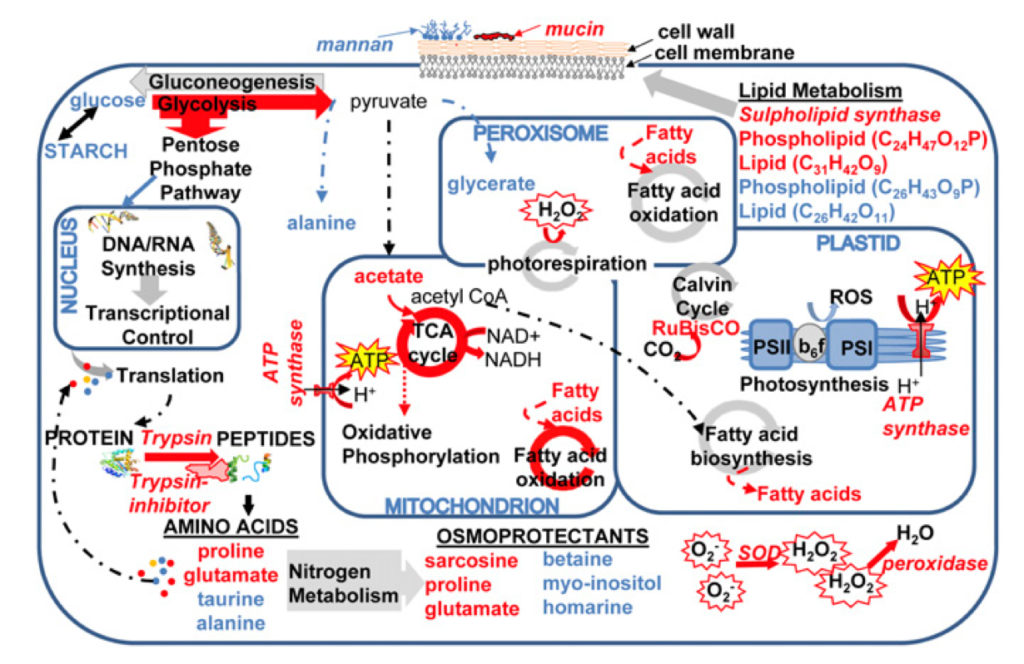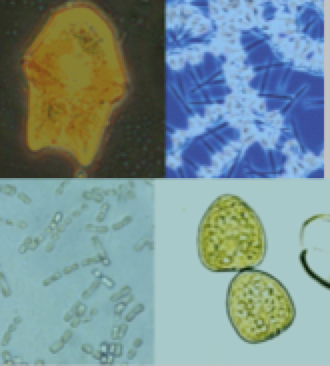
About
Microscopic marine algae (phytoplankton) are responsible for much of Earth’s photosynthesis, serving as the base of massive oceanic food webs supporting fisheries. Phytoplankton compete for limiting resources, with some species producing noxious compounds that kill competitors or inhibit their growth, a process termed “allelopathy.” The red-tide dinoflagellate Karenia brevis is one such allelopathic species, suppressing growth of other phytoplankton and negatively impacting coastal ecosystems. Cultures of K. brevis grown together with the robust model competitor, Asterionellopsis glacialis, caused little change in the metabolic profile of A. glacialis, however, when grown with the more sensitive model competitor isolated from the North Atlantic Ocean (separate from K. brevis), Thalassiosira pseudonana, detectable chemical changes in the metabolic profile of T. pseudonana were observed. A. glacialis was isolated from the Gulf of Mexico where K. brevis is naturally found, while T. pseudonana was isolated from the North Atlantic Ocean which is geographically isolated from K. brevis, allowing for an interesting comparison between species that could have naturally evolved resistance to K. brevis and one which could not have.
Using metabolomics and proteomics we discovered that K. brevis allelopathy disrupted energy metabolism and lipid biosynthesis and impeded cellular protection mechanisms in sensitive competitor T. pseudonana.
Related Photos


Related Publications
Poulin RX, Hogan S, Poulson-Ellestad KL, Brown E, Fernández FM, Kubanek J (2018) Karenia brevis allelopathy compromises the lipidome, membrane integrity, and photosynthesis of competitors. Scientific Reports 8 (1), 9572. DOI: https://doi.org/10.1038/s41598-018-27845-9
Poulin RX, Poulson-Ellestad KL, Roy JS, Kubanek J (2018) Variable allelopathy among phytoplankton reflected in red tide metabolome. Harmful Algae 71, 50-56. DOI: https://doi.org/10.1016/j.hal.2017.12.002
Poulson-Ellestad K, Jones C, Roy J, Viant MR, Fernandez FM, Kubanek J, Nunn B (2014) Metabolomics and proteomics reveal impacts of chemically mediated competition on marine plankton. Proceedings of the National Academy of Sciences 111:9009-9014. doi: 10.1073/pnas.1402130111
Poulson-Ellestad K, McMillan E, Montaya PJ, Kubanek J (2014) Are offshore phytoplankton susceptible to Karenia brevis allelopathy? Journal of Plankton Research 36:1344-1356. doi:10.1093/plankt/fbu064
Poulson KL, Sieg RD, Prince EK, Kubanek J (2010) Allelopathic compounds of a red tide dinoflagellate have species specific and context dependent impacts on phytoplankton. Marine Ecology Progress Series 416:69-78. doi: 10.3354/meps08788
Prince EK, Poulson KL, Myers TL, Sieg RD, Kubanek J (2010) Characterization of allelopathic compounds from the red tide dinoflagellate Karenia brevis. Harmful Algae 10:39-48. doi: 10.1016/j.hal.2010.06.003
Prince EK, Myers TL, Naar J, Kubanek J (2008) Competing phytoplankton undermines allelopathy of a bloomforming dinoflagellate. Proceedings of the Royal Society B: Biological Sciences 275:2733-2741. doi:10.1098/rspb.2008.0760
Prince EK, Myers TL, Kubanek J (2008) Effects of harmful algal blooms on competitors: allelopathic mechanisms of the red tide dinoflagellate Karenia brevis. Limnology & Oceanography 53: 531-541.Myers TL, Prince EK, Naar J, Kubanek J (2008) Loss of waterborne brevetoxins from exposure to phytoplankton competitors. Harmful Algae 7:762-771.
Kubanek J, Hicks MK, Naar J, Villareal T (2005) Does the red tide dinoflagellate Karenia brevis use allelopathy to outcompete other phytoplankton? Limnology and Oceanography 50: 883-895.